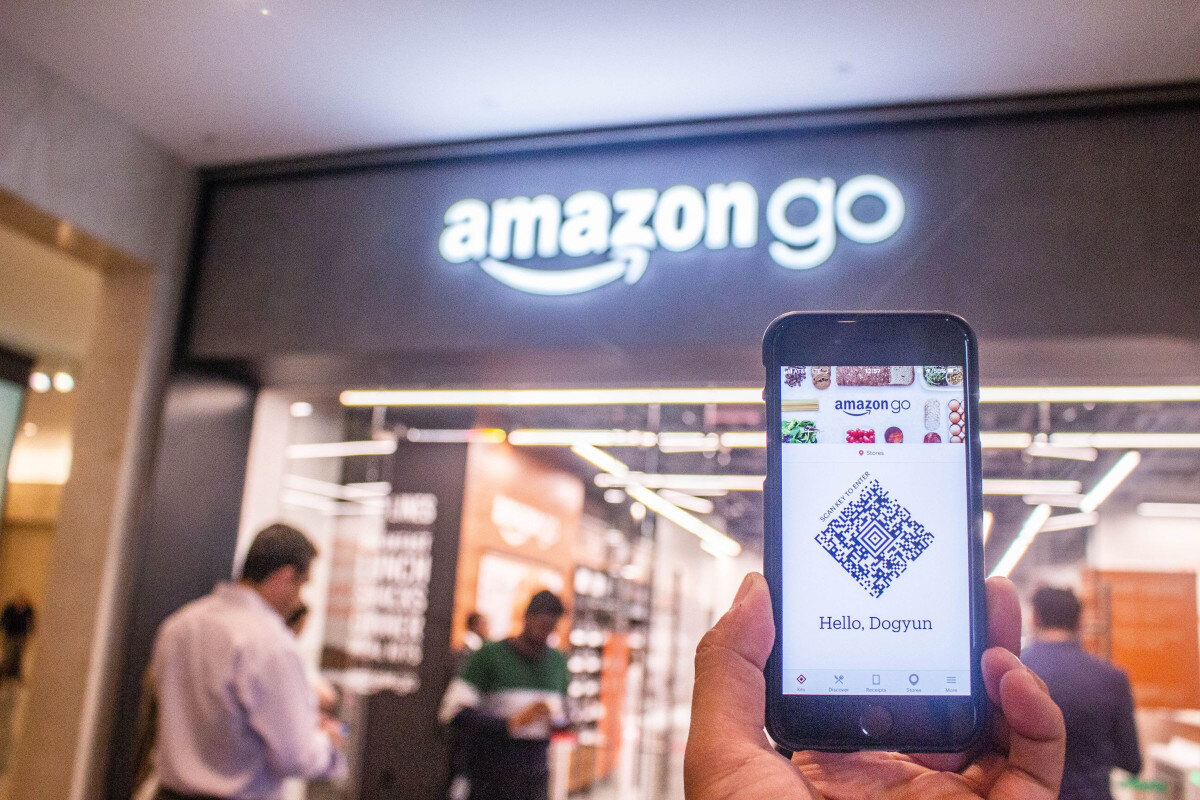Using Customer Future Value for Better Financial Projections
Customer future value (CFV) is how to measure the amount of potential revenue one guest should generate for your business over an identified future...
Platform
Combining online ordering, loyalty, omnichannel messaging, AI insights, and payments in one platform. Paytronix delivers relevant, personal experiences, at scale, that help improve your entire digital marketing funnel by creating amazing frictionless experiences.
A Complete Customer Experience Platform
Online Ordering
Acquire new customers and capture valuable data with industry leading customization features.
Loyalty
Encourage More visits and higher spend with personalized promotions based on individual activity and preferences.
CRM
Build great customer relationships with relevant personal omnichannel campaigns delivered at scale.
Artificial Intelligence
Leverage the most data from the most customer transactions to power 1:1 marketing campaigns and drive revenue.
Payments
Drive brand engagement by providing fast, frictionless guest payments.
Solutions
We use data, customer experience expertise, and technology to solve everyday restaurant and convenience store challenges.
Contactless Experiences
Accommodate your guests' changing preferences by providing safe, efficient service whether dining-in or taking out.
Customer Insights
Collect guest data and analyze behaviors to develop powerful targeted campaigns that produce amazing results.
Marketing Automation
Create and test campaigns across channels and segments to drive loyalty, incremental visits, and additional revenue.
Mobile Experiences
Provide convenient access to your brand, menus and loyalty program to drive retention with a branded or custom app.
Subscriptions
Create a frictionless, fun way to reward your most loyal customers for frequent visits and purchases while normalizing revenues.
Employee Dining
Attract and retain your employees with dollar value or percentage-based incentives and tiered benefits.
Order Experience Builder
Create powerful interactive, and appealing online menus that attract and acquire new customers simply and easily.
Loyalty Programs
High-impact customizable programs that increase spend, visit, and engagement with your brand.
Online Ordering
Maximize first-party digital sales with an exceptional guest experience.
Integrations
Launch your programs with more than 450 existing integrations.
Loyalty Programs
Deliver the same care you do in person with all your digital engagements.
Online Ordering
Drive more first-party orders and make it easy for your crew.
Loyalty Programs
Digital transformations start here - get to know your guests.
Online Ordering
Add a whole new sales channel to grow your business - digital ordering is in your future.
Integrations
We work with your environment - check it out.
Company
We are here to help clients build their businesses by delivering amazing experiences for their guests.
Meet The Team
Our exceptional customer engagement innovations are delivered by a team of extraordinary people.
News/Press
A collection of press and media about our innovations, customers, and people.
Events
A schedule of upcoming tradeshows, conferences, and events that we will participate in.
Careers
Support
Paytronix Login
Order & Delivery Login
Resources
Learn how to create great customer experiences with our free eBooks, webinars, articles, case studies, and customer interviews.
See Our Product In Action
E-Books
Learn more about topics important to the restaurant and c-store customer experience.
Webinars
Watch brief videos for tips and strategies to connect with your customers.
Case Studies
Learn how brands have used the Paytronix platform to increase revenue and engage with guests.
Reports
See how your brand stacks up against industry benchmarks, analysis, and research.
Blog
Catch up with our team of in-house experts for quick articles to help your business.
Are you missing these 5 strategies to transform guest engagement in 2025?
7 min read
Aug 27, 2024

Imagine this: you’re choosing a restaurant for a night out, and you’re not sure where to go. What do you do? Chances are, you’ll whip out your phone or laptop and do a quick Google search to see what’s out there.
In today’s day and age, search engine optimization (SEO) and online visibility is not just a “nice-to-have” for restaurants; it’s a must-have for long-term audience growth and online visibility. However, here’s the thing: SEO is not something that can be mastered overnight, or quickly checked off a to-do list.
It requires consistent effort to maintain and improve visibility in the search engine results pages (SERPs). This can be challenging for restaurant managers and owners, who are already juggling a myriad of responsibilities.
How does SEO work for the restaurant industry, and how do you get started? We’ll explore that in this article, working towards the goal of increasing your organic traffic and reservation rates.
Before we explore tactics, let’s discuss what exactly is SEO and restaurant SEO. Search engine optimization, or SEO for short, is the process of improving the quality, relevance, and performance of a website and its content so the site ranks higher in organic search engine results. For restaurants, SEO means making sure that when someone searches for dining options in your area, your restaurant shows up at the top of the list.
SEO is not the same as paid ads, also known as pay-per-click or PPC. With paid ads, you’re paying the search engine (for example, Google) to put your ad at the top of their search results.
With SEO, you’re optimizing the content and structure of your restaurant website so it organically appears at the top of the search results – no payment involved. The key components of restaurant SEO include keyword research, on-page optimization, and business profile and local directory optimization.
First, keyword research is about finding the words and phrases that customers use when searching for restaurants like yours. For example, if you run an Italian restaurant, keywords might include "best Italian food in [your city]" or "pasta restaurant near me." Using these keywords in the right places on your website—like title tags, body content, and anchor text—content helps attract potential customers.
Second is optimizing your website. There are two major parts to this: first, you’ll want to use keywords strategically and avoid keyword stuffing, which is the process of adding the same keyword multiple times to your title tag, meta description, body content, or anywhere else on your site. Second, you should also make sure your website is well-structured (your main menu is easy to view and navigate), loads quickly (between zero to two seconds), and is optimized for mobile (since many people search for restaurants on their phones.)
Third, business profile and local directory optimization helps you get found by people searching for dining options in your area. To do this, set up and optimize your Google Business Profile. This is a free tool provided by Google that lets you manage how your restaurant appears in search results and on Google Maps. When someone searches for restaurants near them, your Google Business Profile is one of the first things they’ll see, provided your business is relevant to their search and well optimized
The goal of restaurant SEO is to drive more organic search traffic to your restaurant website, which translates into more reservations and sales. It’s a numbers game: the more eyeballs you can get on your site, the more customers you’ll get over time.
So, how exactly do you optimize your website and incorporate more keywords? Here are four key elements to work on:
After you’re done with on-page optimization, there’s also technical SEO fundamentals to take care of. First, mobile responsiveness is key. With many people using smartphones to search for restaurants, your website must be well-designed and mobile-friendly. This means it should adjust to different screen sizes, and everything should be readable even on a small mobile screen. This improves user experience and can boost your search engine rankings.
Second, optimize your website for site speed as well. Slow-loading websites can frustrate users and lead to higher drop-off rates. You can optimize your site speed by compressing images, using web-friendly image formats (.webp instead of .jpeg, for example), and minimizing the use of heavy scripts or plugins. Again, a faster website is essential for both short- and long-term success with search engine rankings.
Third, ensure your website uses HTTPS, a secure socket layer (SSL), rather than HTTP. Think of HTTPS as the golden standard. It provides a secure connection, protecting users' data as they interact with and submit personal information like payment card numbers and phone numbers through your site. Search engines prioritize secure sites, so implementing HTTPS improves your rankings and build trust with your visitors.
Fourth, it’s a good idea to create high-quality, relevant content to rank for different keywords and attract visitors to your site. For example, consider creating a blog on your site where you can publish articles about your restaurant’s cuisine, including the history, ingredients and cooking techniques. You can also do chef interviews and feature other people from the kitchen team.
If this sounds like a ton of work, don’t worry. You can always outsource content creation to freelancers or interns on your team. It may be tough to carve out time to work on your SEO and content strategy, but investing your energy here will ultimately help boost your traffic and revenue.
When it comes to restaurant SEO, a crucial piece of the puzzle is local SEO. If you haven’t already done so, create a Google Business Profile and fill out all the essential information. This includes your restaurant’s name, address, phone number, website, and hours of operation.
To maximize your visibility and attract customers, add high-quality photos of your restaurant’s interior, exterior, and popular dishes. Also, write a compelling description that includes relevant keywords, such as “family-friendly” or “vegan.” Regularly update your profile with special promotions, and engage with customers by responding to reviews and answering questions.
Next, start building local citations. These are mentions of your restaurant’s name, address, and phone number (NAP) on other websites, such as online directories, review sites, and social media platforms. The more local citations you have, the more it improves your search visibility.
At a basic level, list your restaurant in major online directories such as Yelp, TripAdvisor, and Yellow Pages, as well as food and hospitality directories such as Zomato or OpenTable. You can also submit your restaurant’s information to local business directories, community websites, and regional chambers of commerce. These local citations can significantly boost your visibility in area-specific searches.
On top of that, create and maintain social media profiles on platforms like Facebook, Instagram, and LinkedIn, and include your NAP information there as well. It’s also a good idea to partner with local bloggers, food critics, and news outlets to feature your restaurant in their content.
Finally, come up with a strategy to encourage customers to leave reviews. Positive customer reviews are a powerful factor in local search rankings and can significantly influence potential diners’ decisions.
To do this, simply ask your customers to leave a review! You can do this in person after their meal or through signage on tables or around the restaurant. Whichever method you choose, make sure to provide a direct link to your Google Business Profile. This makes it easy and convenient for your customers to review your restaurant.
Another strategy is to offer a small incentive to customers who leave a review. You can offer anything from a discount on the customer’s next visit (which can help boost customer loyalty) to a free appetizer. Just be sure to follow Google’s guidelines, which prohibit offering incentives for positive reviews specifically. Instead, encourage honest feedback.
If you’ve followed all the steps we’ve covered so far and made it to this point, nice work! This gives you a solid foundation for restaurant SEO and sets you up for success. For those who want to take it even further, here are some advanced tips.
First, use structured data to provide search engines with additional information about your restaurant. Structured data is typically written in a format called Schema Markup, and you should add it to the HTML code of your website.
To do this, use a tool like Google's Structured Data Markup Helper to generate code about your restaurant’s menu, opening hours, and location. Once that’s done, insert the code into your website. Structured data can make your search listings more attractive by displaying additional information such as menus, reviews, or business hours directly in the search results.
Second, build high-authority, high-relevance backlinks, which improve your restaurant’s search rankings. Backlinks are links from other websites that point to your site. They act as a vote of confidence from one site to another, indicating that your content is valuable and trustworthy.
Reach out to local newspapers, culinary websites and review platforms so that you can secure features (and backlinks). You can also organize food tasting sessions, where you invite reputable food bloggers to your restaurant to secure more backlinks and improve your online presence.
Third, no SEO strategy is complete without analytics. Tracking and analyzing your SEO performance helps you identify insights to improve your strategy. Here are a few tools we recommend for analytics:
SEO is all about getting more potential customers to your website and getting more reservations for your restaurant. To do this, start by doing keyword research, then optimize your website (both for content and technical fundamentals), and use business profile optimization and local directories to boost visibility. On top of that, you can also utilize structured data, relevant backlinks, and analytics to refine your strategy further.
While you can run promotions or change your pricing strategy for quick wins, think of SEO as a longer-term investment that will steadily benefit your restaurant and brand. SEO helps you stay competitive in a crowded market, and it’s essential for any restaurant that doesn’t want to get left behind. Here are some immediate steps to start with:
Now that you’re starting to grow organic traffic, don’t forget to offer a top-tier online ordering experience. Discover how Paytronix converts your third-party guests to first-party patrons with a free demo.

Customer future value (CFV) is how to measure the amount of potential revenue one guest should generate for your business over an identified future...

Customer loyalty refers to a customer’s consistent preference for a particular brand, service, or product. These are the guests who keep coming back...

Efficient inventory management may not sound like the most glamorous thing in the world, but it’s the backbone of any successful convenience store...